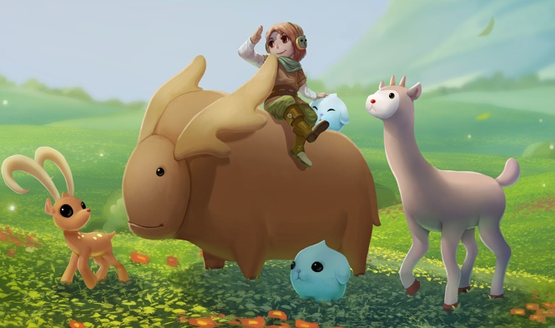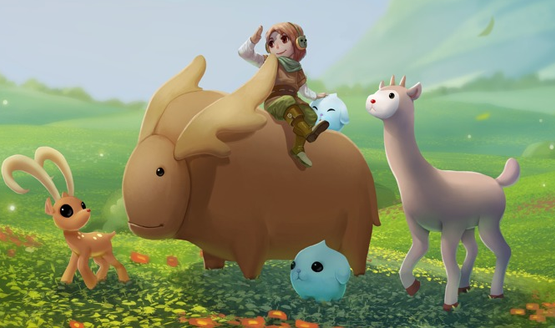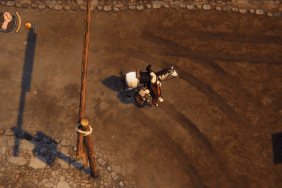PSLS: With the 3D design of the world, birds in trees, etc. often times those audio emitters are physical emitters within the game. With a lot of games you get just a general soundscape of the city or whatever environment you are in, as opposed to actually making each little piece of the world feel alive. Is that more difficult to do, or was it easier to bring the world to life in that way?
Stephan: That’s a really good question. If I had been asked to do it straightaway, and never thought about it, it might have been a difficult thing. For me, it’s something that I have been thinking about for quite a long time. I don’t want to sound arrogant about this, but one of the things in the past that has disappointed me about even triple-A games — and I play a lot of games, I’m a huge game nerd — but one of the things that often disappointed me is that I would be playing a giant, open-world triple-A game — I won’t say any names but you can imagine the ones I’m talking about, where it’s these huge games that we all know and love — and yet some of these games with massive budgets and massive teams have this generic looping bird sound.
It’s like I’m in the forest and there’s this generic bird and it plays for like ten seconds and then it loops. That just seems lazy to me. There’s no sense that if I walk from here to here in the forest, the birds don’t change. Even if I walk into a clearing where there’s no trees, the same sound is playing. For years that has always annoyed me.
While I’ve worked on many genres over the years, I’ve never worked on an open world game, so when Yonder came along I thought that it was time for me to put my money where my mouth is. I’ve always felt I didn’t like the way other people did it in a lot of other games, so I’ve got to step up and prove I can do it better, and if I can’t, I should shut up. What you don’t see with the final product is all the iterations.
I was working on this for about 14 months, so early you’d put all the sounds in and it all sort of explodes. We developed this in Unity so there was this really beautiful approach we could have to this. The developers at Prideful Sloth has created prefabs — which is where you make a tree and call it a prefabricated object. Here is a tree, a pine tree for instance. Then you can have all the qualities you want with this pine tree, texture, model, the lighting, the shadows, etc. Then you can just go pop, pop, pop, pop, over the world which saves a lot of time.
So I thought ‘Why don’t I just attach everything to the prefab?’ Initially, I did. I attached the sound of the birds, and that kind of worked. What this means is that if you were surrounded by five trees, each tree would be that source of a bird. If you walked into a clump of trees, it was like it was in the real world, with birds all around you. And if you move out of those trees, into the grasslands, the birds are over there in those trees. They’re not here. It immediately broke one of those issues that I was talking about.
But then I realized I could take it one step further. The audio tool I used allows me to put multiple objects into one of those emitters and control them. And we had controls for day/night cycle, for weather, for seasons, etc. I was able to take this one event that was attached to the tree, and I packed it full of stuff. It literally had birds during the day, insects during the night, different birds for different seasons. They were all actually packed into that one tree, with just data and parameters that said ‘Is is nighttime? Ok, birds shut up. Insects, make noise.”
These were not looping sounds. I would have a dozen birds going ‘tweet.’ And it would go ‘play a tweet,’ wait a random period of time, and then maybe play a tweet again. So because you’ve got the trees all around you, you’ve got [imitates chorus of different tweets] all around you like in the real world. It also allowed me to, at dawn and then again at dusk, I could control that and say ‘You know what, dawn, we’re getting the dawn chorus where the birds go crazy.’ So when the sun comes up, you’re getting this nice little piece of music that says it’s dawn, and if you’re in the forest, the birds are all going [imitates rapid tweeting, starts slowing down] and then they settle down. And when you get to midday, noon, the birds are usually a lot quieter. As it goes into the evening, they get loud, then fade out as the insects come in.
This wasn’t just adding a bird to a tree. It was adding birds, and insects, and different bird species at different times of year, and I had control of daytime and nighttime. So it was a lot of work, but at no point did it feel like work, because I was so happy with the results that every time I made a little change, I got an immediate result that was like ‘wow, that was really good!’ And when things seemed to work, it just kept pushing me forward, like I’m just going to keep doing this and doing this. So while it took a lot of time, it was something the developers really loved because it brought their world to life.
I saw a review the other day that was saying one of the things they loved about Yonder was that the whole world feels alive. Some of these triple-A companies miss the opportunity. Playing a little loop– the average player isn’t going to understand it’s a loop. They aren’t going to understand what’s wrong, but they’ll know that it just doesn’t feel real to them. They walk out into the open grassland with no trees around and they can still hear the birds. Their subconscious is saying ‘this is not quite right, I don’t know why, but this is not quite right,’ where with this one, people are saying that world just feels very, very alive, so it seems like it worked.
PSLS: With those emitters you get proximity as well, where if you are closer to the tree the volume goes up, and the further away you get the quieter it is.
Stephan: Correct, and that’s a really good point. With the looping sound, they’re the same everywhere. it’s like you’ve got birds stuck to your head as you walk around. Proximity is a perfect example. I took it one step further and I don’t know that anybody has noticed this, but the crickets that play at nighttime on a tree, if you get too close to a tree, they stop. Like in the real world, if you walk over crickets, they hear your footsteps and they shut up? And then you take a step back and slowly start to chirp again. The crickets in a lot of Yonder do the same thing. If you go right up to a tree, the crickets will stop, and if you step back, after a little bit of time they start to come back and eventually come back fully.
The next page discusses the living ecosystem that can be created through sound alone.









